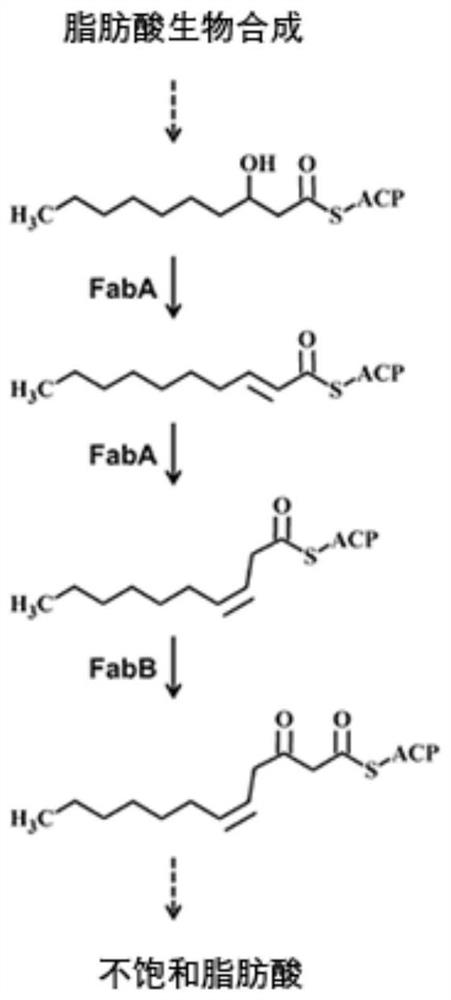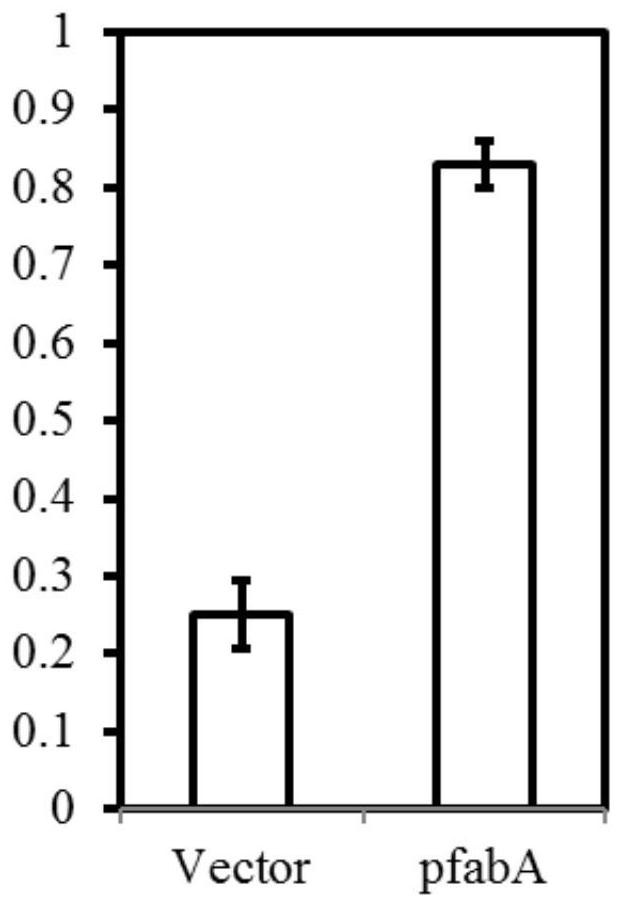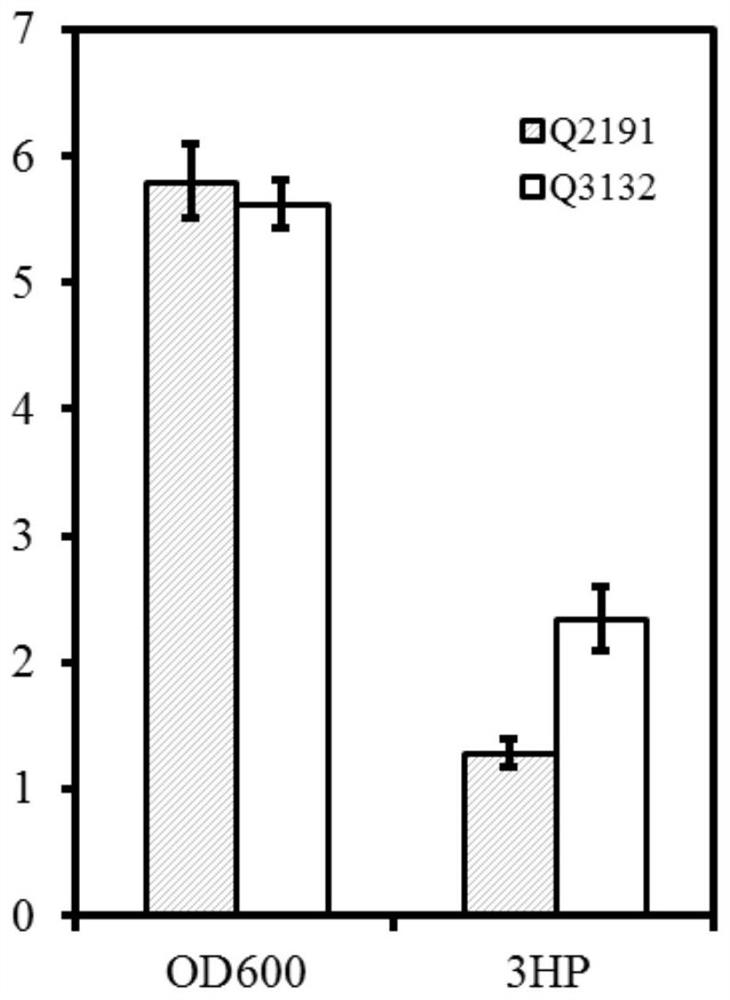Recombinant bacterium with improved acid tolerance and construction method and application thereof
A technology of recombinant bacteria and acid tolerance, applied in the field of genetic engineering, can solve problems such as poor acid tolerance and environmental pollution, achieve the effects of improving economic rationality and environmental friendliness, reducing production costs, and avoiding additional consumption
- Summary
- Abstract
- Description
- Claims
- Application Information
AI Technical Summary
Problems solved by technology
Method used
Image
Examples
Embodiment 1
[0044]Example 1: Construction of recombinant bacteria with improved acid tolerance.
[0045]1) Using the genomic DNA of E. coli BL21 (DE3) as a template, the hydroxyacyl-ACP dehydroisomerase gene fabA was obtained by PCR cloning with primers SEQ ID NO. 1 and SEQ ID NO. 2;
[0046]2) After the hydroxyacyl-ACP dehydroisomerase gene fabA and the vector pACYCDuet1 obtained in step 1) were digested with SalI and NotI respectively, the target fragment fabA and the vector pACYCDuet-1 after digestion were recovered using the recovery kit, and then Use T4DNA ligase was used for ligation, the ligation product was transformed into E. coli DH5α, and the positive clones were screened using primers SEQ ID NO. 3 and SEQ ID NO. 2 to obtain the recombinant plasmid pACYCDuet1-fabA.
[0047]3) Prepare the recipient strain E.coli BL21(DE3) competent according to the operating steps of the TAKARA Competent Preparation Kit, and transform the recombinant plasmid pACYCDuet1-fabA into the host cell E.coli BL21(DE3) ...
Embodiment 2
[0057]Example 2. Application of the recombinant bacteria prepared in Example 1 in the production of 3-hydroxypropionic acid and its derivatives.
[0058]In this example, the acetyl-CoA carboxylase gene acc and the malonyl-CoA reductase gene mcr were overexpressed in the recombinant bacteria obtained in Example 1. The synthetic gene of hydroxypropionic acid, acetyl-Coenzyme A carboxylase gene acc, comes from Escherichia coli, where the GeneBank ID of subunit accA is 6062185, the GeneBank ID of subunit accB is 6058890, and the GeneBank ID of subunit accC is The GeneBank ID of subunit accD is 60588863, and the GeneBank ID of the subunit accD is 6059083; a genetically engineered strain of 3-hydroxypropionic acid with improved acid tolerance is obtained, and the engineered strain is inoculated into a fermentation medium and cultured to obtain 3-hydroxypropionic acid Its derivatives; the above-mentioned malonyl-CoA reductase gene mcr consists of an N-terminal modified fragment mcrN and a C-t...
PUM
 Login to View More
Login to View More Abstract
Description
Claims
Application Information
 Login to View More
Login to View More - R&D
- Intellectual Property
- Life Sciences
- Materials
- Tech Scout
- Unparalleled Data Quality
- Higher Quality Content
- 60% Fewer Hallucinations
Browse by: Latest US Patents, China's latest patents, Technical Efficacy Thesaurus, Application Domain, Technology Topic, Popular Technical Reports.
© 2025 PatSnap. All rights reserved.Legal|Privacy policy|Modern Slavery Act Transparency Statement|Sitemap|About US| Contact US: help@patsnap.com



